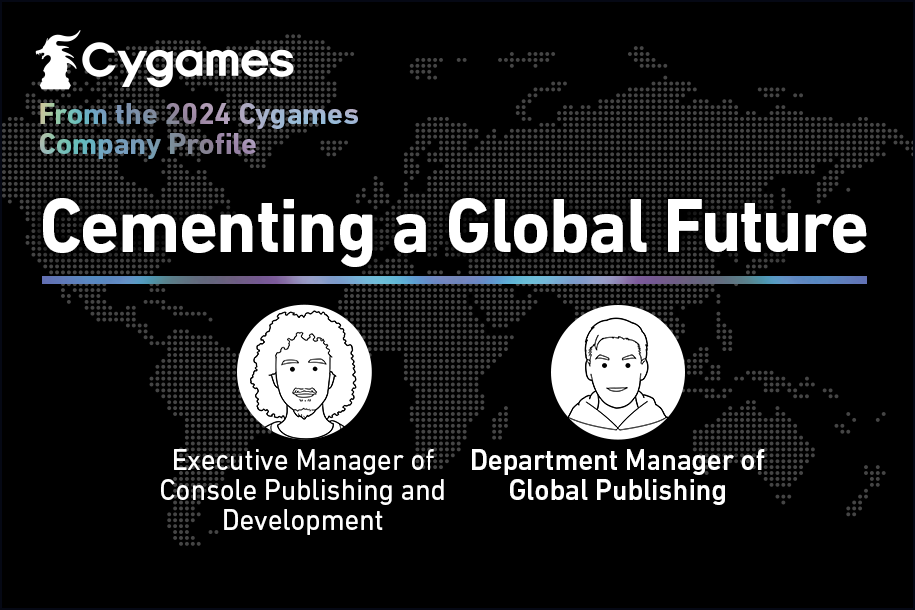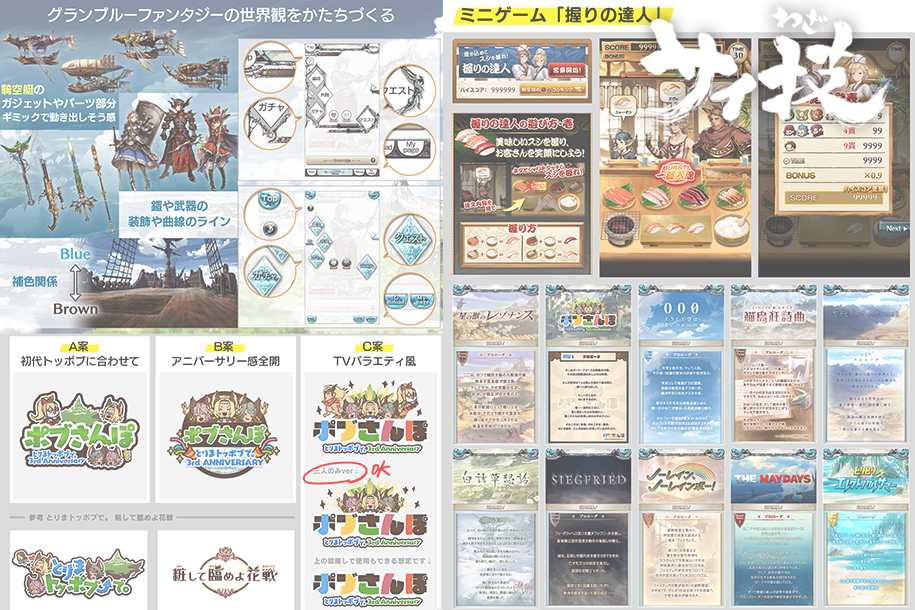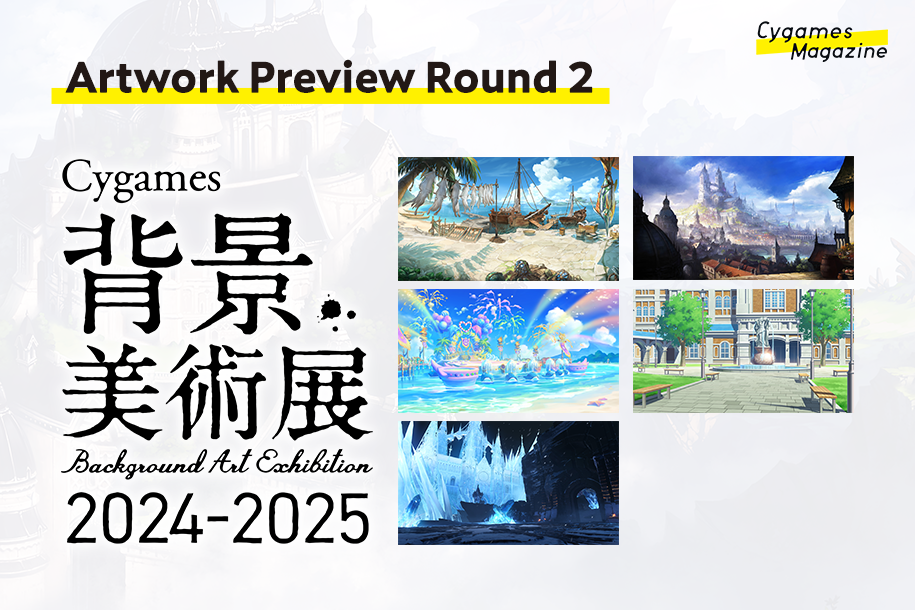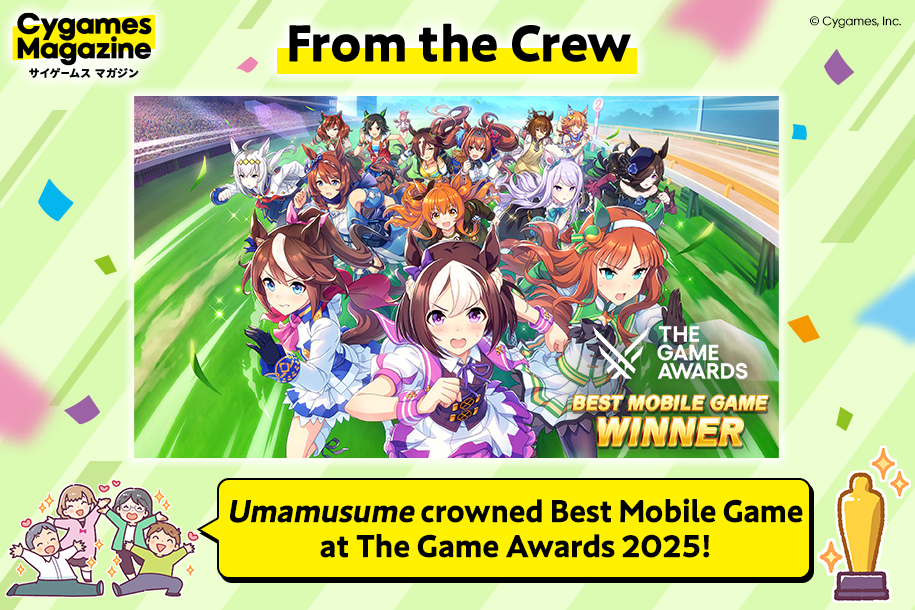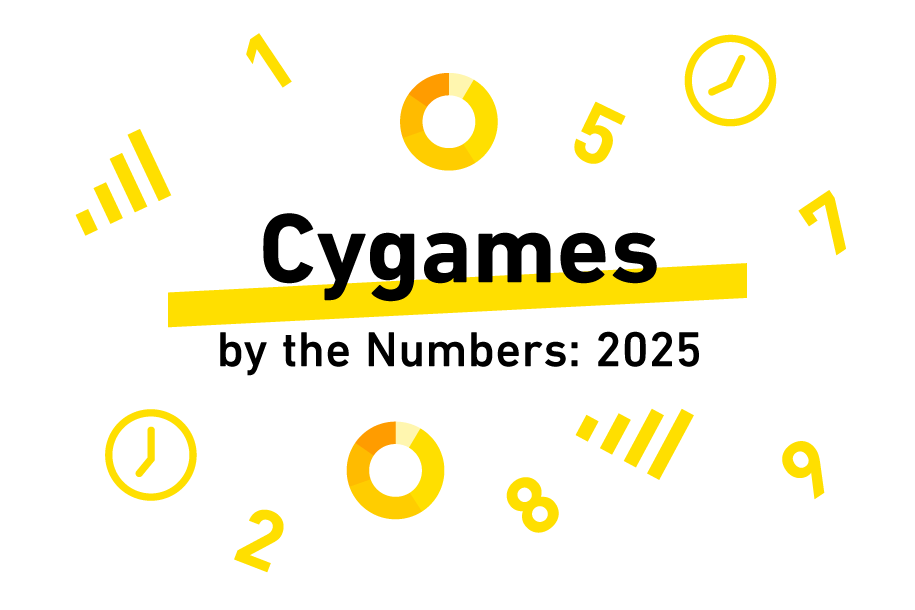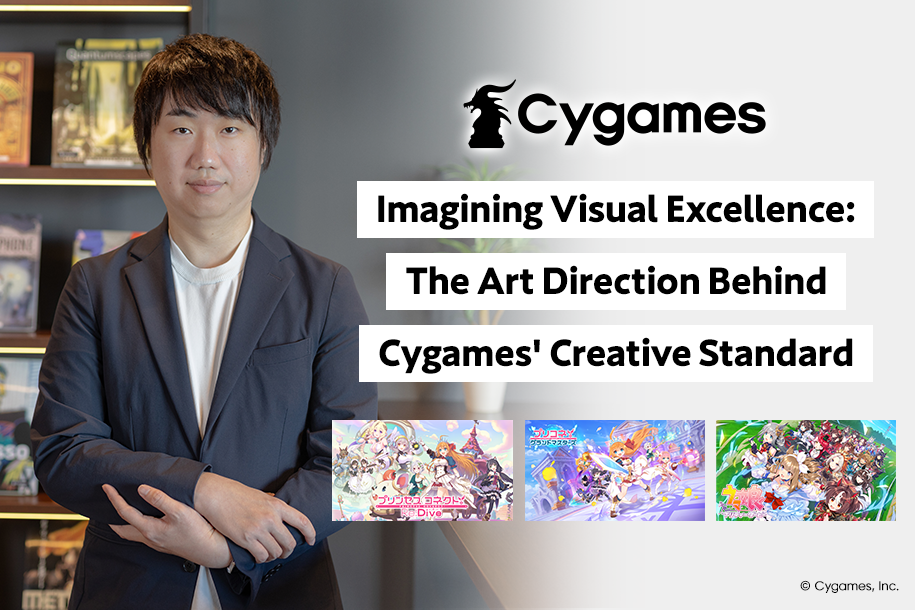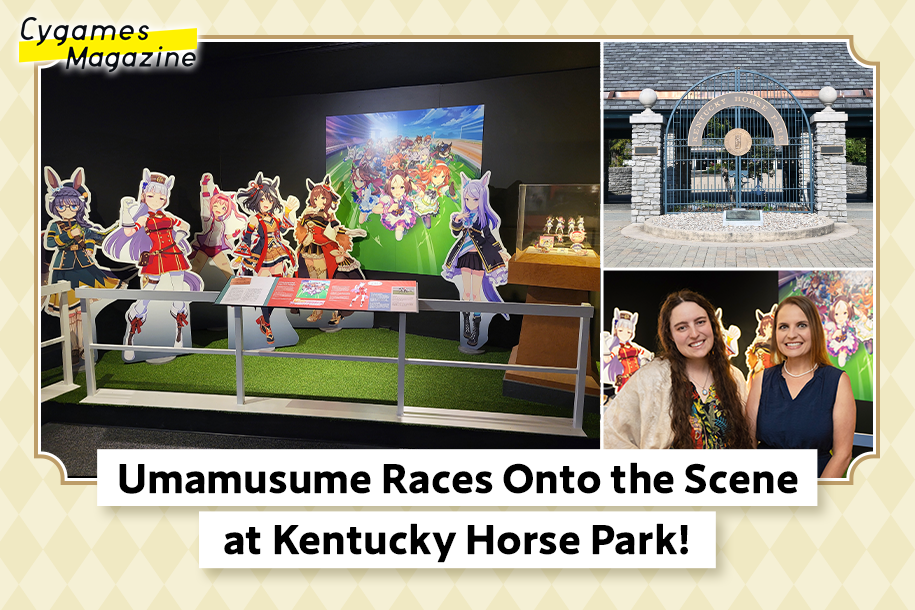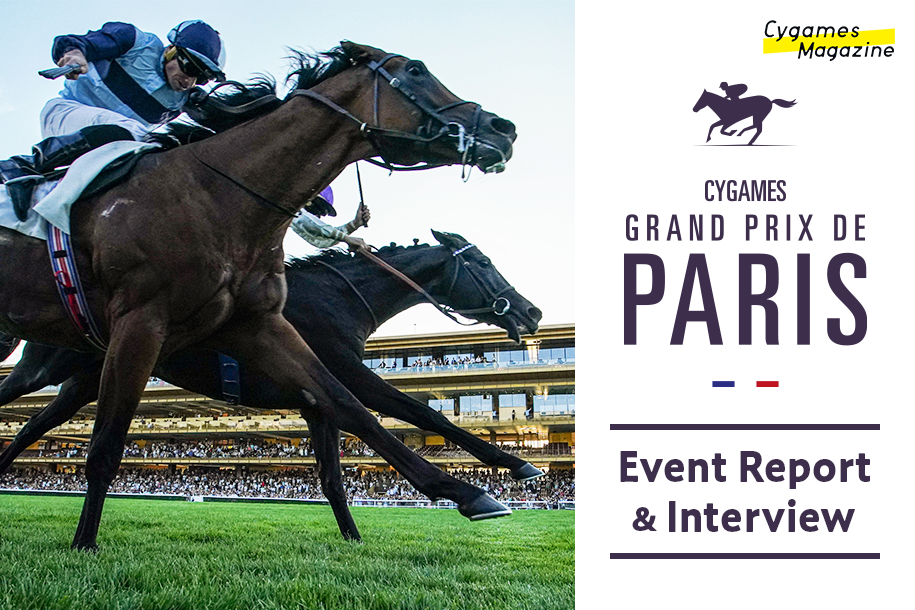A Chat between Illustrators from Cygames & Kusanagi!
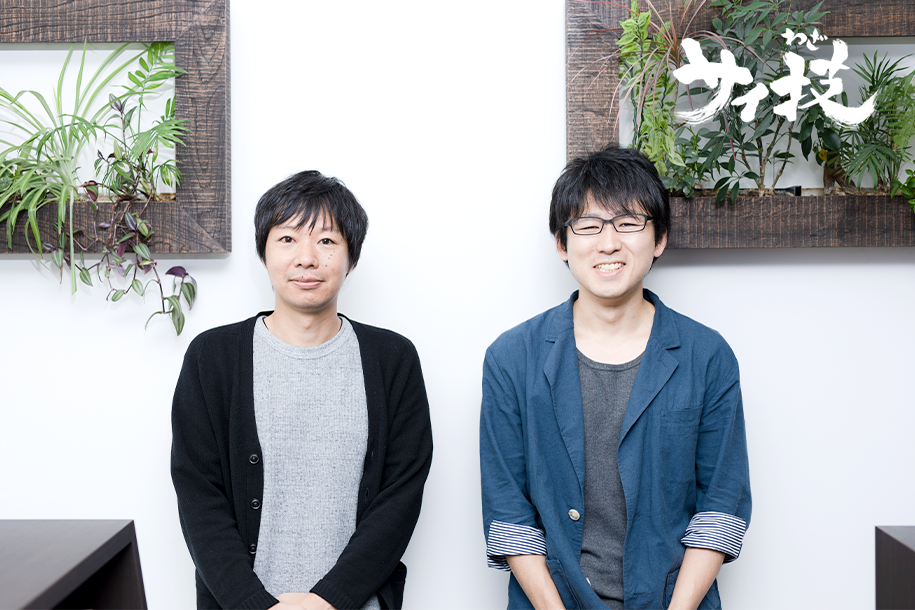
We are happy to say that the backgrounds used in Cygames titles have been warmly received by many players. In July 2019, we held the Cygames Background Art Exhibition, a first for our company. There, we exhibited background art from our biggest game titles. The event was attended by many visitors.
Meanwhile, Kusanagi, one of our group companies that specialize in background art for anime and movies, is involved in a number of famous works.
In this edition of our special CySkills series, we will speak with illustrators from both Cygames and Kusanagi about the processes behind creating background art, the things they pay attention to, and words of wisdom for those aiming to become background artists.
- Cygames Illustration TeamHiroaki
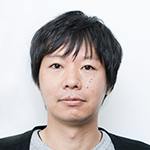
- Hiroaki joined Cygames in 2014. He is responsible for Shadowverse’s concept art, along with the direction and production of background art for the game’s story mode. As the leader of the background illustration team, he is also involved in the training of new illustrators.
- Kusanagi Inc. Background Art SupervisorYuuki
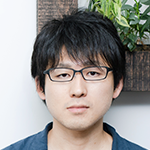
- Yuuki joined Kusanagi in 2015, where he works as background art supervisor. Some of his representative works include the TV anime Chaos;Child (art director), the Netflix original anime series Levius (art director), and the anime theatrical release of Ni no Kuni (art assistant).
The key to creating memorable backgrounds: background illustrations made from the heart.
The quality of the backgrounds in both Cygames and Kusanagi titles has received a great deal of praise. What do you think it is that people like about your backgrounds? What do you focus on in your work?
Cygames Hiroaki: First, my baseline is ensuring that players of the game really enjoy the experience. To achieve that, I work to create striking and memorable backgrounds that allow players to enter into the world of the game and experience it for themselves. I want to make backgrounds that really illustrate the feelings of the characters and the atmosphere of the scenes. I hope that desire comes through in my backgrounds.
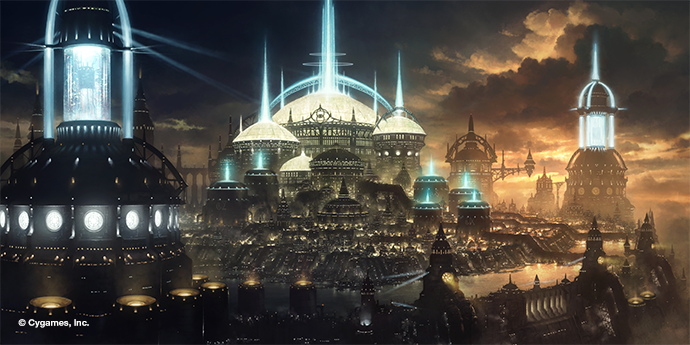
It sounds difficult to depict things that can’t be seen through images, like characters’ feelings or the atmosphere of a scene.
Hiroaki: Yes, it can be. I think the key to cultivating that skill is by observing the world around you every day. Also important is the sharing of know-how between staff. I think the backgrounds for Granblue Fantasy are very characteristic of our style. They include numerous elements unique to the Cygames worldview, such as a feeling of depth in the sky and the scale of buildings. These are shared with our other projects.
There’s a strong sense among us that the whole background team respects each other’s projects while sharing what they do well themselves.
Kusanagi Yuuki: When it comes to anime, if there is original source material then I keep in mind that fans of it are watching, and so I pay careful attention to the degree to which I choose to recreate it. I also try to create situations that make the characters look good. I don’t want to draw forgettable images that leave no impression, so I put a lot of work into the parts that I want to look good.
On the other hand, sometimes I hold back in order to let the characters really take center stage. I balance my work depending on the situation.
Also, once the characters start moving and music is added the backgrounds can start to look different. After my backgrounds are converted to visuals I may make balance adjustments, like with the colors used. I want to draw the kind of backgrounds that let people look back over the body of work and think it was a good title.
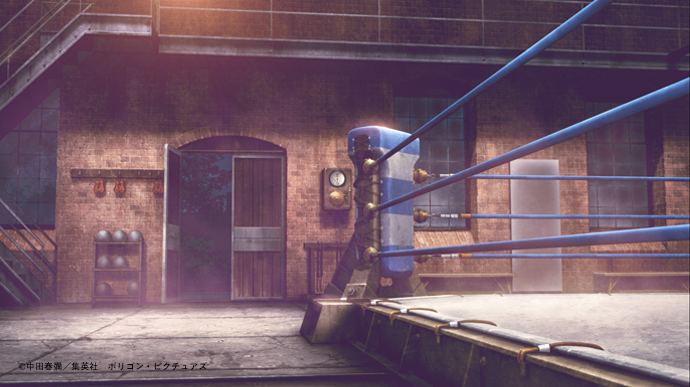
What kind of impressions do you have of background illustration production in each other’s industries, in games and anime?
Yuuki: I play quite a lot of games myself, and when I see a Cygames title I think that they must have spent quite a long time on it. The volume of information packed into a single image is quite impressive. For anime you tend you look at the sequence as a whole, while for games it’s really wonderful how so much is imparted with a single image.
Hiroaki: From my perspective, I think anime achieves an excellent unified quality and honed sense of scheduling. On such tight schedules and with so many people working together on a project that big, I think it’s miraculous how everyone maintains a unified sense of purpose.
There are also cuts that are interesting because of character movements, and cuts with lots of big camera angle changes, and I think showing off artists’ work amid these typical anime style cuts is a different form of appeal from the kind of images that we create.
As a side note, can I ask how long you generally spend at Cygames making a single background for a game?
Hiroaki: It really does depend on the background. Fast ones can be finished in about seven days, while longer ones can take twenty days or more. That includes not only the time actually spent drawing, but also trial and error in the design and time for things like supervision. Those images that will be seen by the player for a long time undergo a particularly long period of experimentation.
As do things like key visuals and maps, which will be used for a long period of time. Sometimes they can even end up being used for magazine advertising and posters put up in subway stations. I work to achieve designs that both have an impact at a glance and remain interesting when looked at for a long time.
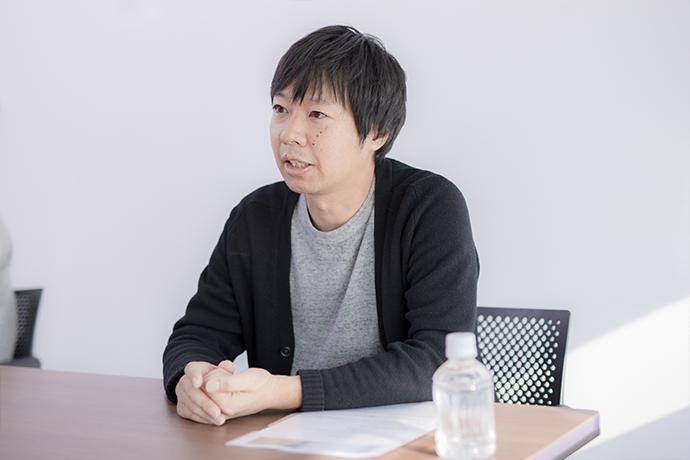
What do you consider the ideal background illustration for anime and games?
Yuuki: For anime backgrounds, I think it’s important to be able to understand them at a glance. Sometimes they appear onscreen for a very short period of time, and sometimes a very long time. So if a scene is only onscreen for a moment, then it needs to highlight silhouettes and instantly impart what’s being shown.
Meanwhile, if it’s just a background without characters then it needs to make an impression that’s formulated on a persuasive image based in reality.
Hiroaki: Ideally, I want to draw images that make users glad to have experienced the game as a whole, including but not limited to the backgrounds.
I think this is the same for anime, but for games we draw our backgrounds with the assumption that they will sometimes be partially concealed by the characters. I want my backgrounds to have a memorable impact, and for players to enjoy everything about them, including those parts that they won’t see. I want them to feel as though they’ve really been traveling in the world.
First, determine intent: the first step a background illustrator must take.
Can you describe in more detail exactly what work is involved in being an illustrator for games and for anime?
Hiroaki: For a Cygames background illustrator, first the producer, director, planner, scenario writer, and other staff all share their vision, and we decide together how to express the game’s worldview from a visual perspective.
To elaborate, this starts with creating concept boards and art that detail the direction the game is going to take. From there we draw each of the individual pieces of background art. That’s our standard procedure. When working on more detailed pieces, we can also create maps and icons. Recently, we’ve had more opportunities to design 3D images, but mainly we create 2D background art.
Yuuki: Anime is the same in that we start by determining the intent of the director. If the title has original source material, we look that over, and then meet with the director to discuss what kind of flavor to bring to the anime. If we’re going to change the atmosphere from the source, we also need to discuss if we’re going to add more detail, go with a lighter touch, or if it’s a cheerful story then maybe go for something with more pop.
Anime often has a different flavor from the source material, doesn’t it. So you might change the flavor of the background depending on the direction taken by the anime?
Yuuki: That’s right. Once the direction is decided, the main concept board and frequently occurring scenes are drawn by the art director, which determines the flavor of the anime’s art. Before we enter the production process properly, it’s very important to carefully complete this foundation work.
After that, we start working on the backgrounds required for the scenes in each episode. We create about 350 cuts for each episode. I think the schedule and number of images created is probably where anime differs most from games.

Three hundred and fifty cuts?! That’s for one episode, not an entire series?
Yuuki: That’s right. That’s the standard. A weekly broadcast of thirty minutes will involve drawing 350 cuts a week, and so it becomes vital to work as efficiently as possible. While maintaining a certain level of quality, we determine which backgrounds are for important scenes and which are not, and adjust the workload accordingly. These days, for a series mainly set in a single place such a school, we’ll do things like create backgrounds using 3D software to make it easier to craft multiple variations.
That’s a blistering pace. How many people do you have working on that?
Yuuki: Currently, including collaborating companies and freelancers, we are looking at about ten people in total.
Three hundred and fifty cuts with ten people! Wow! As background supervisor, what role do you play in all of this, Yuuki?
Yuuki: The background supervisor at Kusanagi looks at the total workload the company is responsible for, and the quality required of that work, and then assigns the art director and background staff.
There’s just one art director for each series. They draw concept boards to decide the direction and atmosphere, and lead the background staff who complete the work.
So whereas an art director and background staff are assigned to the creation of backgrounds for one series, the background supervisor manages teams across all series. That’s the gist of my role.
I see. So it’s a vital role necessary to keep things on schedule and maintain quality.
The final quality of individual images and calorie distribution:
elements that determine the overall image of the work.
So an ongoing title like Shadowverse requires new backgrounds when, for instance, new story is added?
Hiroaki: Yes, generally. That said, it’s better to have them ready as early as possible, so we often create concept boards while the plot is being worked out. There’s also content for Shadowverse where concepts are decided one to two years in advance, so we get details on the schedule as far ahead of time as possible and prepare them as early as we can.
So both games and anime involve drawing concept boards and art prior to going into production. What kind of elements are required in order to decide the overall image of the content?
Yuuki: For anime, I pay the most attention to something that I call “calories”: the overall density of drawing that has to be done.
On the one hand, it’s important that backgrounds match the series’ atmosphere and characters, and images need to make an impression. On the other hand, if you go too high-calorie and make the images too dense, you’ll face a backbreaking volume of work in a limited time schedule. You need to strike a balance.
Hiroaki: Having to match the imagery of the content and characters is the same for games. We also pay attention to how fun the images are to look at, whether users will enjoy experiencing them, and whether they would want to actually go there.
As opposed to anime, which is watched, games are played. Even though both games and anime use backgrounds, it feels like viewers’ expectations would be different across mediums. Do you keep that in mind in your work?
Hiroaki: I think the length of time backgrounds are looked at is probably totally different. For a game, users proceed at their own pace and control that progress for themselves, which means they naturally end up looking at the backgrounds for longer. For anime, scenes proceed automatically, meaning sometimes there are backgrounds that are only shown for a second or less.
For that reason, Cygames places emphasis on the quality of our backgrounds as a single image. We work to bring character to each and every background, strive to craft visuals that users won’t grow bored with, and try to ensure that every game scene makes a real impression. I think that means we probably spend longer on a single background and go through more trial and error in its creation than artists do for anime backgrounds.
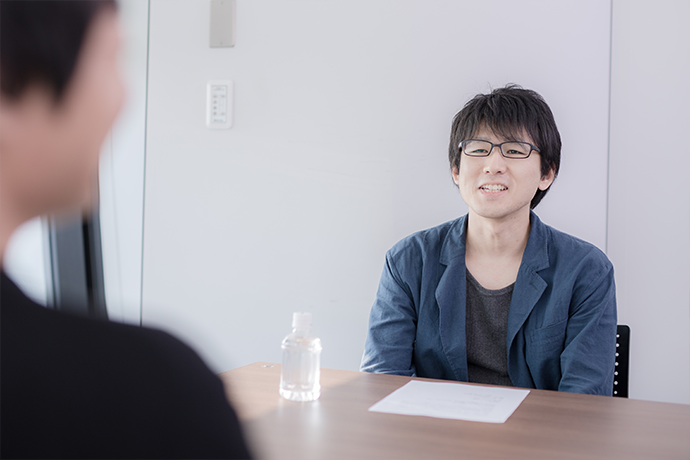
Yuuki: I think you’re right. As anime is fundamentally a moving, changing medium, we value overall flow more than we do the degree of quality of each and every image. That’s why we pinpoint vital scenes at the storyboard stage and decide which cuts will be the big set pieces.
This comes back to the calorie analogy I was talking about earlier. We don’t expend too much effort on backgrounds for scenes where we want the characters to stand out, and put more effort into those scenes in which the background is the star.
That makes sense. The key to anime, then, is to achieve flow throughout a vast number of composition cuts.
Yuuki: Exactly. In regard to the division of labor, it becomes very important to select the correct staff for the right task. Each person tends to have their own strengths and weaknesses.
While problems and issues exist, it’s still fun to draw backgrounds!
When do the two of you have the most fun while working?
Yuuki: When I finish something and it looks exactly like I imagined it, or when I’m drawing and I just get in the zone and draw exactly what I was trying for. I have a sense of achievement when I draw a set-piece cut, and I’m happy when it’s well received.
Hiroaki: For me it’s when the game is released. Even when I’m drawing images, I still have a strong sense that I’m making a game. So as a creator making a game, I’m very happy when that game gets released and is enjoyed by the players.
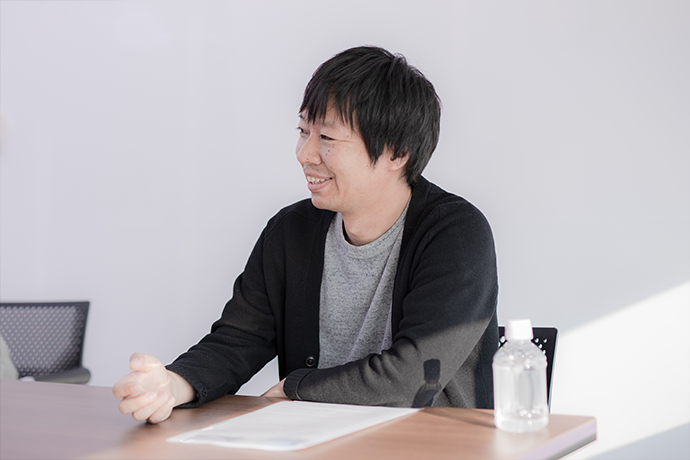
Do you have anything to say to someone’s who’s aiming to work as a background illustrator?
Yuuki: Nowadays, to work in the anime background industry, you need something more than just the ability to simply draw a picture. For example, as I mentioned earlier, people who can create the entire setting for a series by using 3D CG software to construct realistic buildings and rooms. It’s a fact that people who can handle not only 2D but also 3D images are highly valued.
Also, we need people who can observe things in everyday life, research them, and use them as fuel to create images. People who understand how things work and can create persuasive images. It’s also vital to be able to bring imagination into the equation, and create fantastic scenery that doesn’t actually exist.
Hiroaki: It’s pretty much the same for us. I think knowledge is vital. Architecture, geography, world history, how things work, how society works, and so on… If you don’t understand why things are the way they are, then you can’t draw persuasive pictures. That goes for everything.
We need people who can think about how to create backgrounds that will make the player feel like they’re in that place. Who research ways to depict the atmosphere they’re trying to create on a regular basis. It’s important that they’re interested in things they don’t know about, and actively pursue them. I think someone greedy for further knowledge, and who enjoys using that knowledge to create art is suited to this kind of work.
Finally, can you share your impressions of this discussion today?
Hiroaki: We actually met for the first time today, but this has been a lot of fun. Talking about all this allowed me to organize my own thoughts on my work, and reaffirmed for me that drawing backgrounds is fun.
I think our answers and feelings on a lot of the questions were similar, and we share the same desire to deliver a good final product to our audiences. In terms of how serious we are and how hard the work is, I think we’re comrades working with the same intentions.
Yuuki: I’ve always felt that we can’t compete with the quality and presentation of art in games, and have wondered how they’re made. But listening to this today, I’ve discovered that the overall flow is pretty much the same. Due to the nature of anime, we can’t create things in the same way as for games, but that passion for and approach to the work are definitely inspiring.
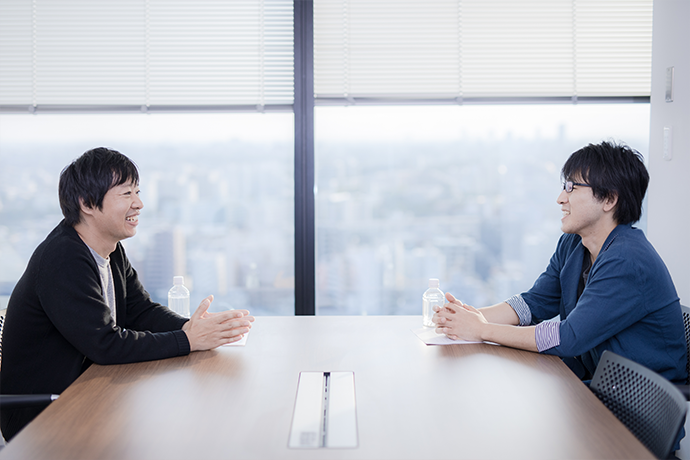
Thank you for your time today. I hope that this discussion will go on to influence and inspire both of you in your future creative endeavors!
(C)Haruhisa Nakata/SHUEISHA POLYGON PICTURES



